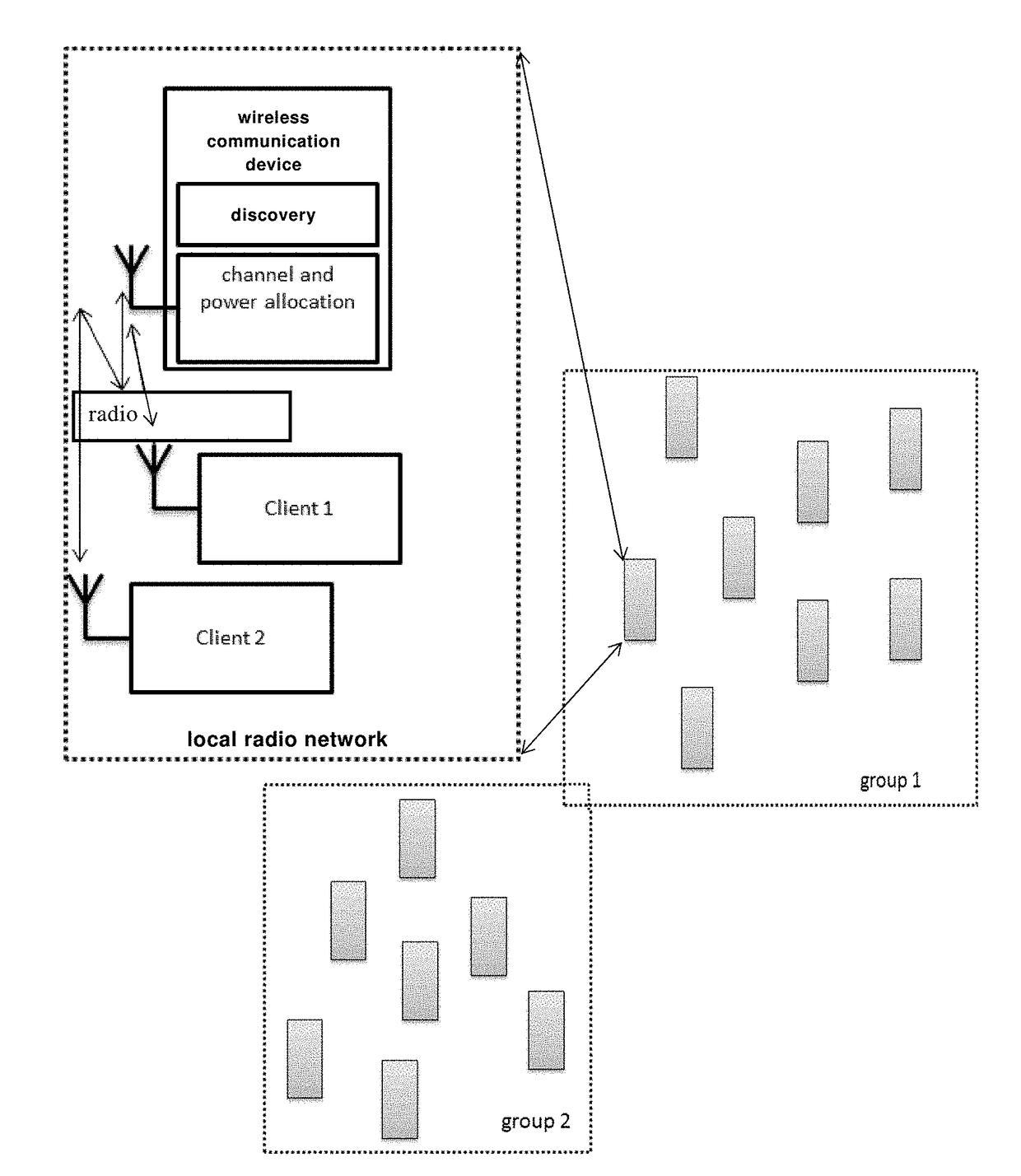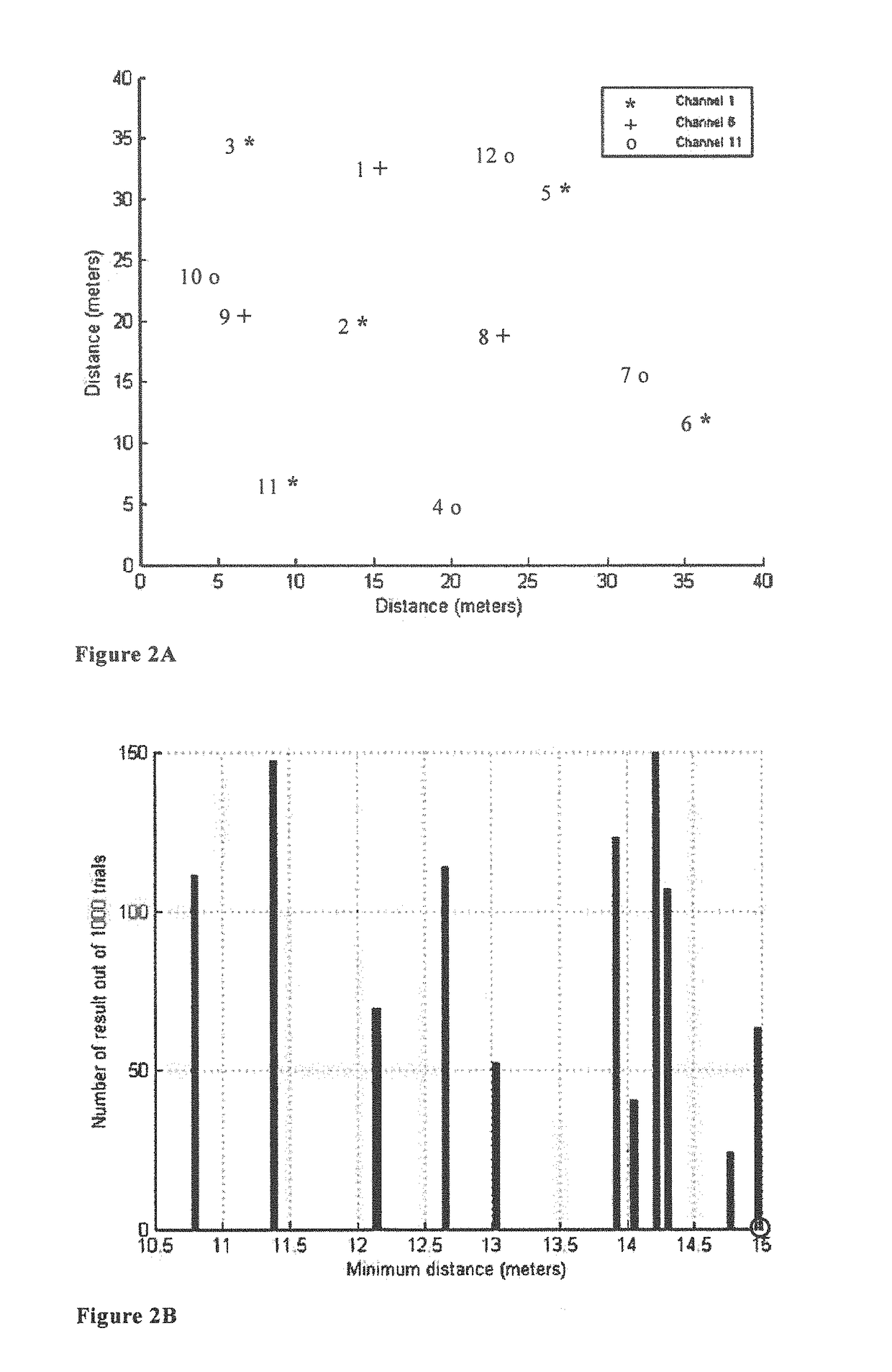Channel selection in unlicensed bands using peer-to-peer communication via the backhaul network
- Summary
- Abstract
- Description
- Claims
- Application Information
AI Technical Summary
Benefits of technology
Problems solved by technology
Method used
Image
Examples
Embodiment Construction
[0046]The invention will now be explained in detail with reference to the drawings in which:
[0047]FIG. 1A is an example of a topology consisting of 4 devices located on a line;
[0048]FIG. 1B illustrates the probability of optimal choice of a topology consisting of devices located on a line;
[0049]FIG. 2A illustrates sets of local devices close together in one group;
[0050]FIG. 2B illustrates the corresponding distance distribution when each access point in FIG. 2A continuously selects the channel with the least interference;
[0051]FIG. 3 shows an example of local devices with corresponding clients, called a local radio network, and
[0052]FIG. 4 illustrates sets of local devices organized in groups, because their radio parameter settings are interfering with each others resulting in reduced performance.
[0053]In the following description a wireless radio communication device is meant to be a device capable of communicating wirelessly with clients, e.g. laptops, tablets and mobiles. Devices...
PUM
 Login to View More
Login to View More Abstract
Description
Claims
Application Information
 Login to View More
Login to View More - R&D
- Intellectual Property
- Life Sciences
- Materials
- Tech Scout
- Unparalleled Data Quality
- Higher Quality Content
- 60% Fewer Hallucinations
Browse by: Latest US Patents, China's latest patents, Technical Efficacy Thesaurus, Application Domain, Technology Topic, Popular Technical Reports.
© 2025 PatSnap. All rights reserved.Legal|Privacy policy|Modern Slavery Act Transparency Statement|Sitemap|About US| Contact US: help@patsnap.com



